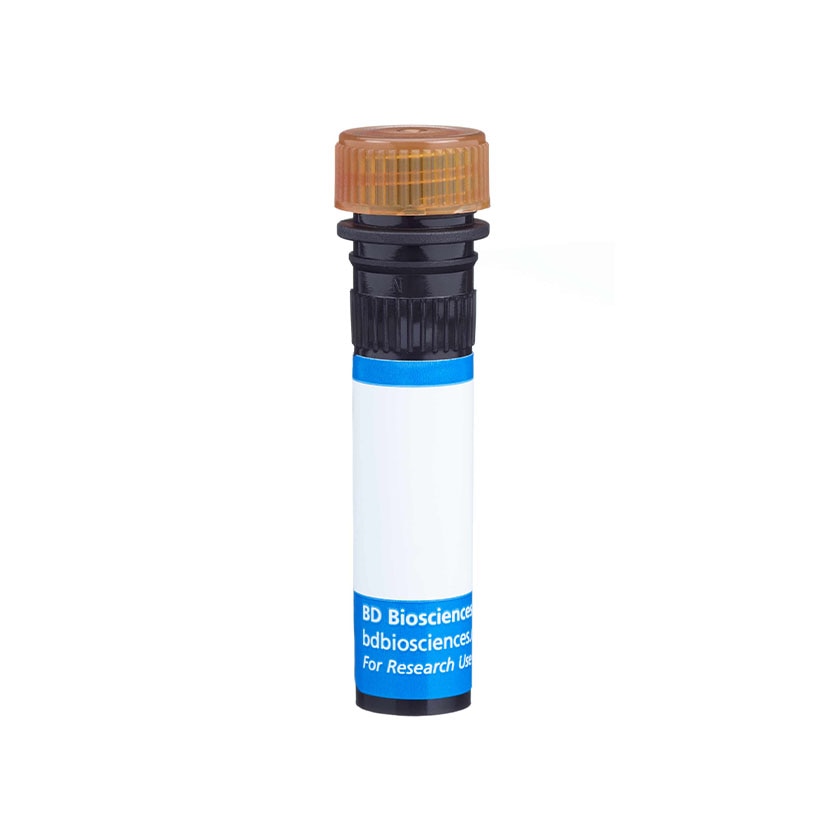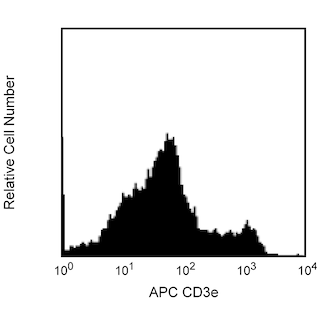-
抗体試薬
- フローサイトメトリー用試薬
-
ウェスタンブロッティング抗体試薬
- イムノアッセイ試薬
-
シングルセル試薬
- BD® AbSeq Assay | シングルセル試薬
- BD Rhapsody™ Accessory Kits | シングルセル試薬
- BD® Single-Cell Multiplexing Kit | シングルセル試薬
- BD Rhapsody™ Targeted mRNA Kits | シングルセル試薬
- BD Rhapsody™ Whole Transcriptome Analysis (WTA) Amplification Kit | シングルセル試薬
- BD Rhapsody™ TCR/BCR Profiling Assays (VDJ Assays) | シングルセル試薬
- BD® OMICS-Guard Sample Preservation Buffer
- BD Rhapsody™ ATAC-Seq Assays
-
細胞機能評価のための試薬
-
顕微鏡・イメージング用試薬
-
細胞調製・分離試薬
-
- BD® AbSeq Assay | シングルセル試薬
- BD Rhapsody™ Accessory Kits | シングルセル試薬
- BD® Single-Cell Multiplexing Kit | シングルセル試薬
- BD Rhapsody™ Targeted mRNA Kits | シングルセル試薬
- BD Rhapsody™ Whole Transcriptome Analysis (WTA) Amplification Kit | シングルセル試薬
- BD Rhapsody™ TCR/BCR Profiling Assays (VDJ Assays) | シングルセル試薬
- BD® OMICS-Guard Sample Preservation Buffer
- BD Rhapsody™ ATAC-Seq Assays
- Japan (Japanese)
-
Change country/language
Old Browser
Looks like you're visiting us from {countryName}.
Would you like to stay on the current country site or be switched to your country?




Multicolor flow cytometric analysis of CD24 expression on mouse splenocytes. Splenocytes from C57BL/6 mice were stained with APC Hamster Anti-Mouse CD3e antibody (Cat. No. 553066) and with either a PerCP-Cy™5.5 Rat IgG2b, κ isotype control (Cat. No. 550764, Left Panel) or with the PerCP-Cy™5.5 Rat Anti-Mouse CD24 antibody (Cat. No. 562360, Right Panel). Two-color flow cytometric dot plots showing the correlated expression patterns of CD3 versus CD24 (or Ig isotype control staining) were derived from gated events with the forward and side light-scatter characteristics of viable splenocytes. Flow cytometry was performed using a BD™ LSR II Flow Cytometer System.


BD Pharmingen™ PerCP-Cy™5.5 Rat Anti-Mouse CD24

Regulatory Statusの凡例
Any use of products other than the permitted use without the express written authorization of Becton, Dickinson and Company is strictly prohibited.
Preparation and Storage
Product Notices
- Since applications vary, each investigator should titrate the reagent to obtain optimal results.
- An isotype control should be used at the same concentration as the antibody of interest.
- Please refer to www.bdbiosciences.com/us/s/resources for technical protocols.
- Cy is a trademark of Amersham Biosciences Limited. This conjugated product is sold under license to the following patents: US Patent Nos. 5,486,616; 5,569,587; 5,569,766; 5,627,027.
- Please observe the following precautions: Absorption of visible light can significantly alter the energy transfer occurring in any tandem fluorochrome conjugate; therefore, we recommend that special precautions be taken (such as wrapping vials, tubes, or racks in aluminum foil) to prevent exposure of conjugated reagents, including cells stained with those reagents, to room illumination.
- Caution: Sodium azide yields highly toxic hydrazoic acid under acidic conditions. Dilute azide compounds in running water before discarding to avoid accumulation of potentially explosive deposits in plumbing.
- PerCP-Cy5.5–labelled antibodies can be used with FITC- and R-PE–labelled reagents in single-laser flow cytometers with no significant spectral overlap of PerCP-Cy5.5, FITC, and R-PE fluorescence.
- PerCP-Cy5.5 is optimized for use with a single argon ion laser emitting 488-nm light. Because of the broad absorption spectrum of the tandem fluorochrome, extra care must be taken when using dual-laser cytometers, which may directly excite both PerCP and Cy5.5™. We recommend the use of cross-beam compensation during data acquisition or software compensation during data analysis.
- For fluorochrome spectra and suitable instrument settings, please refer to our Multicolor Flow Cytometry web page at www.bdbiosciences.com/colors.
- This product is subject to proprietary rights of Amersham Biosciences Corp. and Carnegie Mellon University and made and sold under license from Amersham Biosciences Corp. This product is licensed for sale only for research. It is not licensed for any other use. If you require a commercial license to use this product and do not have one return this material, unopened to BD Biosciences, 10975 Torreyana Rd, San Diego, CA 92121 and any money paid for the material will be refunded.
関連製品



The M1/69 monoclonal antibody specifically binds to CD24 (Heat-Stable Antigen, HSA or HsAg), a variably glycosylated, glycosyl-phosphatidylinositol-anchored membrane protein expressed on erythrocytes, granulocytes, monocytes, lymphocytes, and neurons. Hematopoietic stem cells of the embryonic yolk sac and fetal liver express CD24. Levels of expression of CD24 vary during differentiation of the T and B cell lineages. In the bone marrow, hematopoietic progenitors acquire CD24 expression upon commitment to the B-lymphocyte lineage. Immature B cells in the bone marrow express low CD24 levels whereas peripheral B lymphocytes express intermediate to high levels of CD24. The level of CD24 expression has been reported to rise upon activation of splenic B cells with LPS, but not with CD154 (CD40 Ligand). The majority of thymocytes express high levels of CD24, while most mature thymic and peripheral T lymphocytes do not express CD24. In contrast, TCR-bearing thymocytes which emigrate to the spleen are CD24+. Dendritic cells of the thymus, spleen, liver, and epidermal Langerhans cells have also been reported to express CD24. CD24 is not expressed by NK cells, as determined by staining with J11d mAb (Cat. No. 553146). CD24 is involved in the costimulation of CD4+ T cells by B cells, it is a "co-inducer" of in vitro thymocyte maturation, and it is a ligand of CD62P (P-selectin). While the monoclonal antibodies 30-F1, M1/69, and J11d all react with CD24, they show subtle differences in the level of staining of different lymphocyte populations. When possible, investigators should continue to use the same monoclonal anti-CD24 antibody as used in previous studies.

Development References (5)
-
Alterman LA, Crispe IN, Kinnon C. Characterization of the murine heat-stable antigen: an hematolymphoid differentiation antigen defined by the J11d, M1/69 and B2A2 antibodies. Eur J Immunol. 1990; 20(7):1597-1602. (Clone-specific). View Reference
-
Crowley M, Inaba K, Witmer-Pack M, Steinman RM. The cell surface of mouse dendritic cells: FACS analyses of dendritic cells from different tissues including thymus. Cell Immunol. 1989; 118(1):108-125. (Clone-specific). View Reference
-
Reichlin A, Iizuka K, Yokoyama WM. Isolation of murine natural killer cells. In: Coligan J, Kruisbeek AM, Margulies D, Shevach EM, Strober W, ed. Current Protocols in Immunology. New York: John Wiley and Sons; 1999:3.22.1-3.22.6.
-
Springer T, Galfre G, Secher DS, Milstein C. Monoclonal xenogeneic antibodies to murine cell surface antigens: identification of novel leukocyte differentiation antigens. Eur J Immunol. 1978; 8(8):539-551. (Immunogen). View Reference
-
Stall AM, Wells SM. FACS analysis of murine B-cell populations. In: Herzenberg LA, Weir DM, Blackwell C, ed. Weir's Handbook of Experimental Immunology. Blackwell Science Publishers; 1997:63.1-63.17.
Please refer to Support Documents for Quality Certificates
Global - Refer to manufacturer's instructions for use and related User Manuals and Technical data sheets before using this products as described
Comparisons, where applicable, are made against older BD Technology, manual methods or are general performance claims. Comparisons are not made against non-BD technologies, unless otherwise noted.
For Research Use Only. Not for use in diagnostic or therapeutic procedures.
Report a Site Issue
This form is intended to help us improve our website experience. For other support, please visit our Contact Us page.